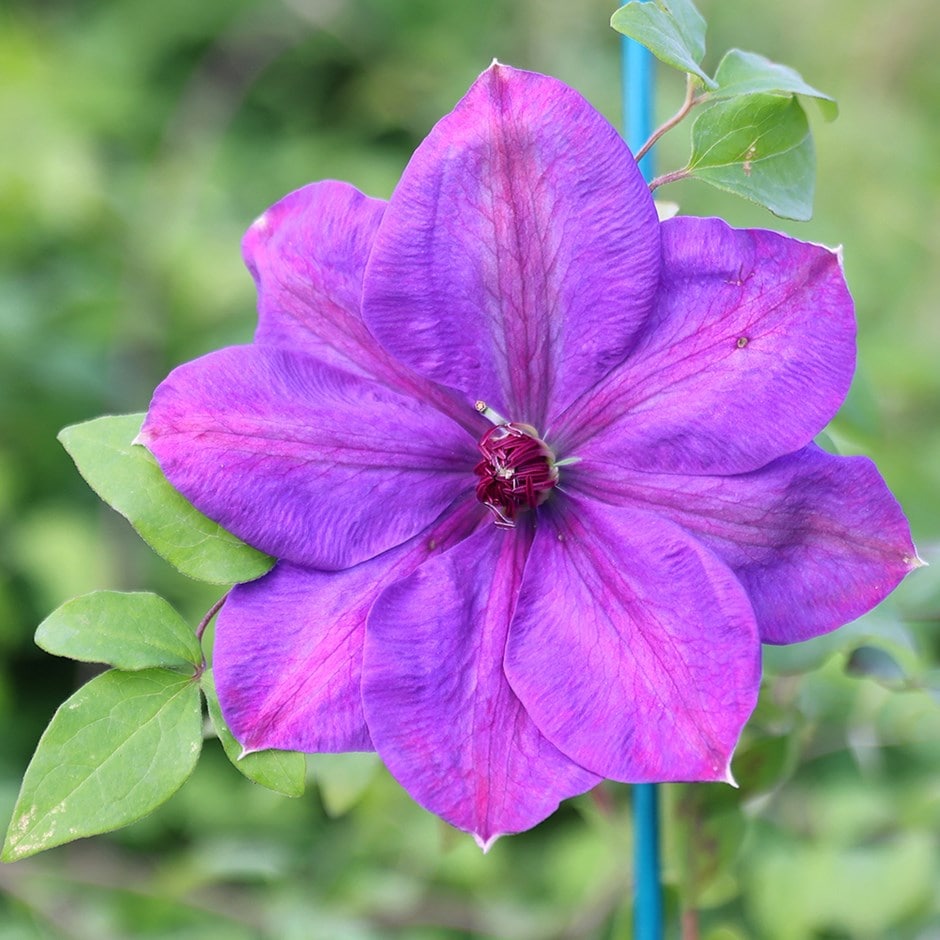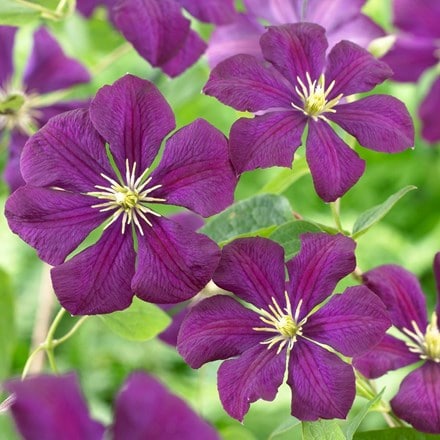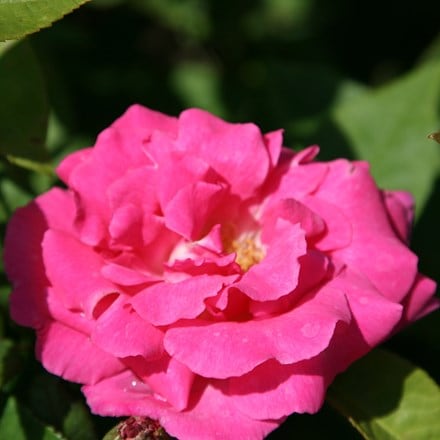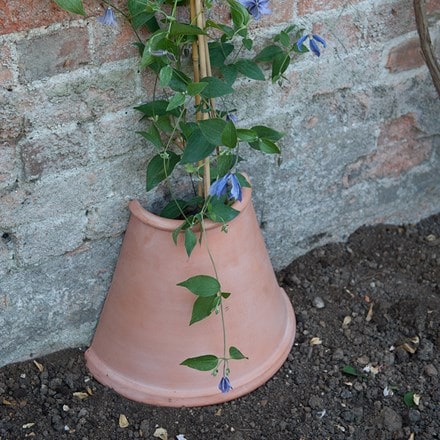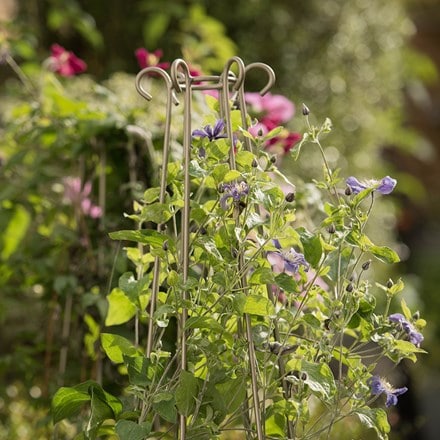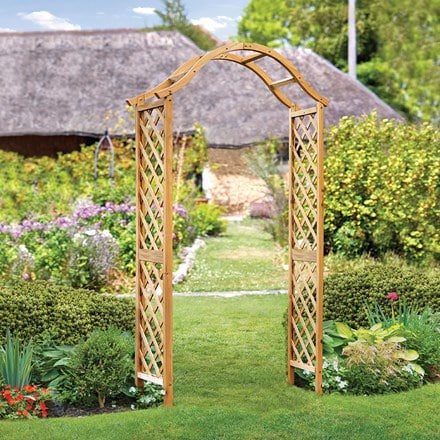Eventual height & spread
Clematis 'Elsa Späth'
early large flowered clematis (group 2) (syn. Elsa Spath)
- 3 litre pot | 60cm cane
- £26.95
- In stock (shipped within 2-3 working days)
- 9cm pot | 30cm cane
- £14.99
- available to order from spring
- 2 + 1 FREE 9cm pots
- £29.98 £9.99 each
- available to order from spring
Delivery options
- Standard £5.99
- Position: full sun or partial shade
- Soil:moderately fertile, well-drained, neutral soil
- Rate of growth: average to fast
- Flowering period: May to June and August to September
- Hardiness: fully hardy
One of the finest ‘blue’ clematis available, 'Elsa Späth' is a stunning group 2 (early large-flowered clematis) producing a profusion of large blue-purple flowers with beautiful paler violet bars and striking anthers, which fade from plum red to pale cream. Suitable for larger pots, this glamorous clematis will look stunning supported by wigwam canes.
To avoid dry conditions, and to ensure good soil contact around the rootball, we advise planting climbers at least 30cm (12in), and preferably 45-60cm (18-24in) away from the base of a wall or fence. An even larger distance should be maintained when planting climbers beside an existing tree or shrub.
Clematis are happiest when their roots are kept cool and moist, so try to plant them where the base of the plants will be lightly shaded by other, lower-growing species. Otherwise, use a clematis root protector, or top-dress the rootball (avoiding the immediate crown), with a generous layer of shingle or pebbles.
Remove dead and damaged stems before growth begins in early spring, cutting all remaining stems back to where strong buds are visible.
Apply a slow-release balanced fertiliser and a mulch of well-rotted garden compost around the base of the plant - again avoiding the immediate crown.
Clematis are happiest when their roots are kept cool and moist, so try to plant them where the base of the plants will be lightly shaded by other, lower-growing species. Otherwise, use a clematis root protector, or top-dress the rootball (avoiding the immediate crown), with a generous layer of shingle or pebbles.
Remove dead and damaged stems before growth begins in early spring, cutting all remaining stems back to where strong buds are visible.
Apply a slow-release balanced fertiliser and a mulch of well-rotted garden compost around the base of the plant - again avoiding the immediate crown.
- Humans: Skin irritant; Pets: Harmful if eaten
